Every year during spring and fall, billions of birds across North America migrate between their breeding grounds and wintering grounds. The vast majority of these birds (80%) migrate primarily at night, using the night sky to navigate. However, much of the night sky throughout the United States experiences some degree of light pollution from our cities. Light from big buildings, street lights, and homes can disorient birds, leading them to collide with buildings and lose track of their migration path.
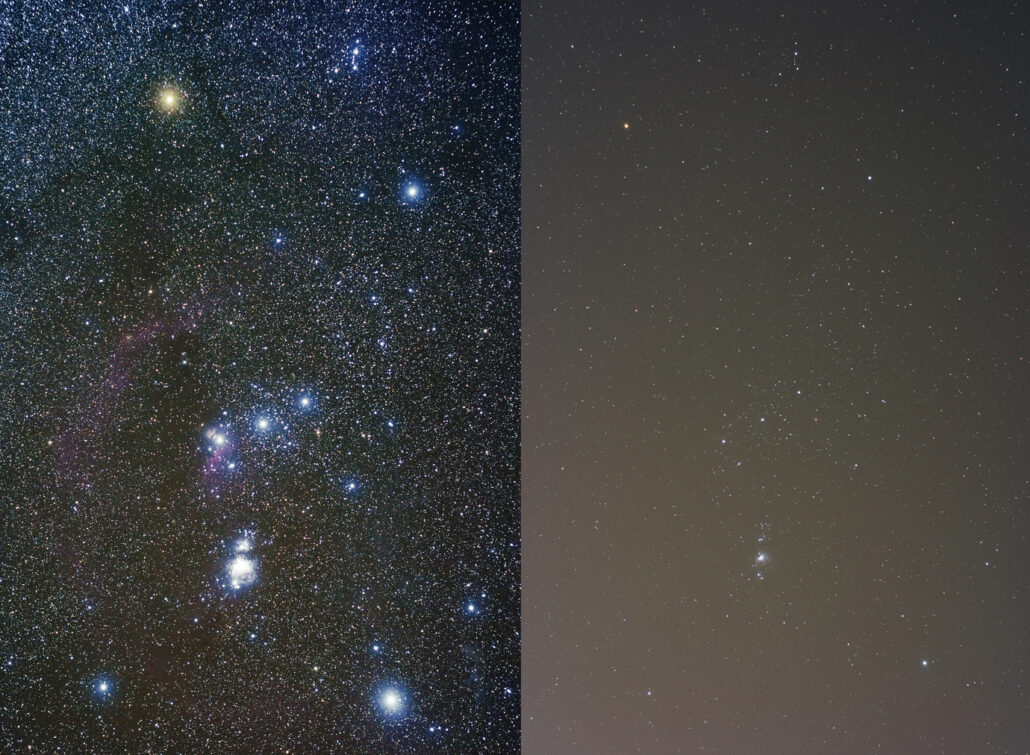
Light pollution significantly reduces the visibility of the night sky. Both of these photos capture the constellation Orion; the left image is from a dark sky area, and the right image is from the city of Orem, UT. Photo by Jeremy Stanley, CC BY 2.0.
Migration is a stressful process, and birds that become disoriented can waste their precious limited energy flying around trying to re-orient themselves, leading to exhaustion and in many cases, death. Even disoriented birds that are able to land safely to take a break are vulnerable to other threats like starvation and predation. What’s more, it appears that birds might not only become disoriented from light pollution, but may actively be attracted to cities and bright lights during migration. This means urban areas can draw in birds that would otherwise take other flight paths. For those of us who live in cities, it can be exciting to see migratory birds in our neighborhoods, but urban areas can be more dangerous and difficult to survive in than non-urban areas, especially for migrating birds that are already stressed.
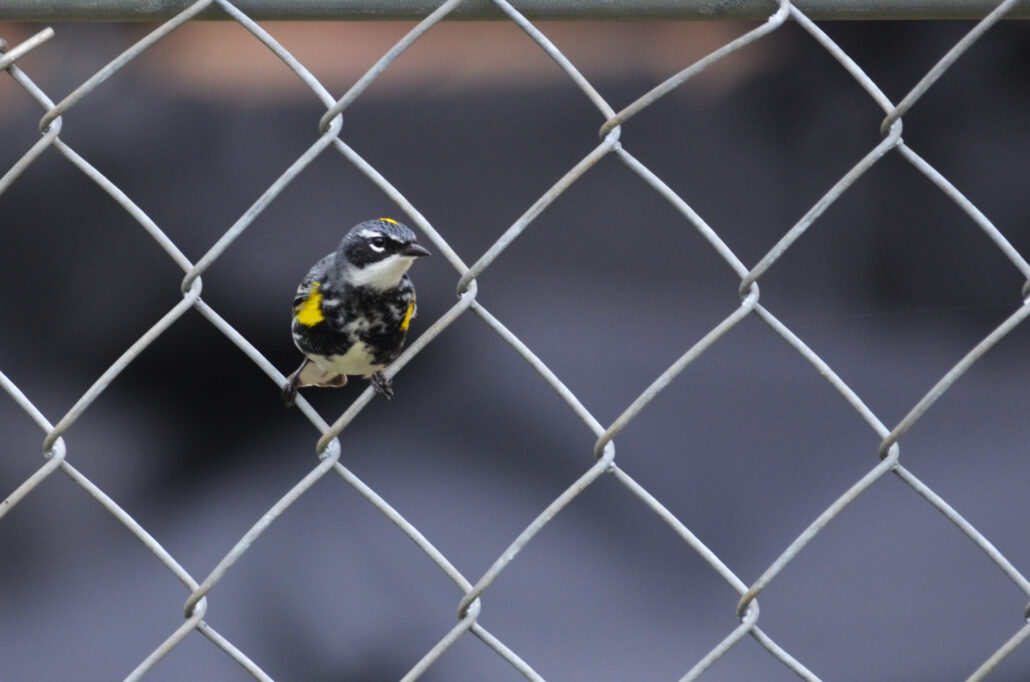
A yellow-rumped warbler perches on a chain link fence. Photo by Courtney Celley/USFWS.
Luckily, there are several simple and easy solutions to the problem of light pollution that all of us can put into action! Putting these four simple measures into effect at your home or property will help reduce the amount of light that can be seen by migrating birds at night, making their journeys just a little bit easier. And if we all do the same, we can help these birds travel between their breeding and wintering grounds safely. Not to mention, all of these small actions can add up to significant savings on energy bills and increased energy efficiency for us as well!
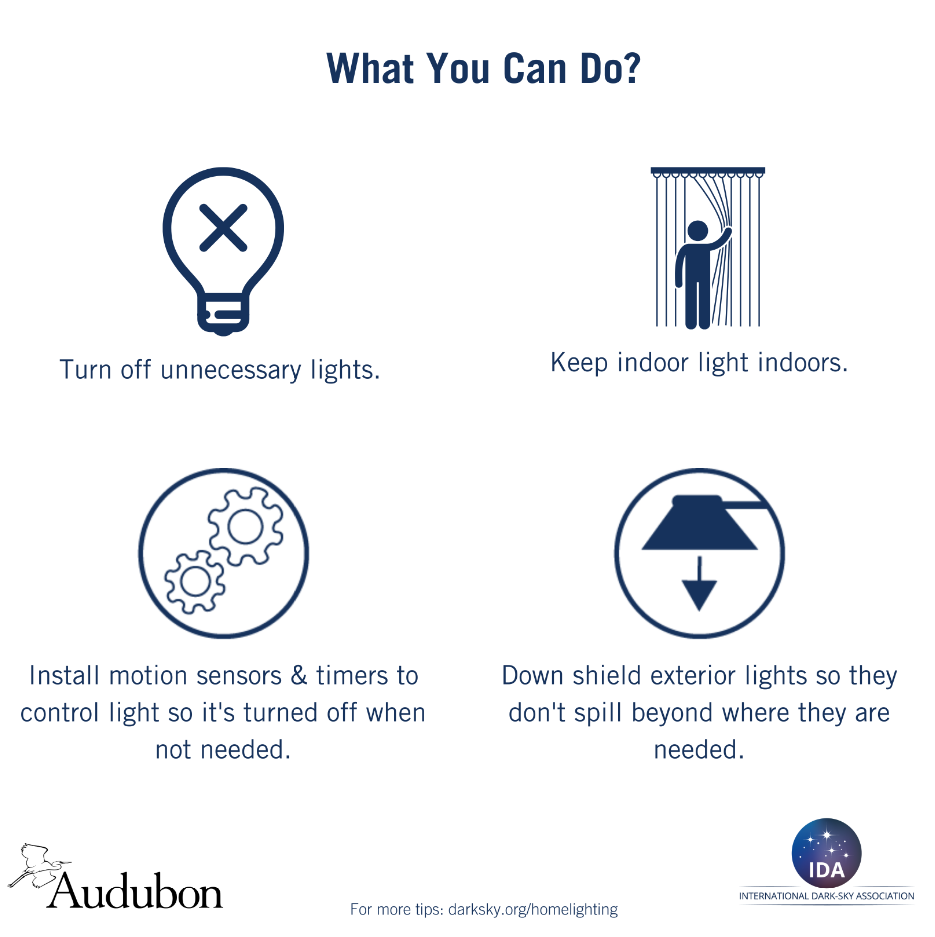
You can also take the Lights Out message further by writing your local governments, business, and community leaders and educating them about this issue. Encourage them to start awareness campaigns and enact policies that follow the guidelines above to reduce harm to birds, and save some money on energy costs. Our partner organization Audubon even has templates for letters you can send to business owners and government officials; you can find them on their Lights Out page.
If you’re interested in tracking bird migrations yourself, we recommend checking out BirdCast, operated by the Cornell Lab of Ornithology and Colorado State University (CSU), and Lights Out Alerts, operated by CSU’s AeroEco Lab. BirdCast uses radar to track migrating birds, and produces both live maps and multi-day migration forecasts that are available to anyone. These maps allow you to see how many birds are expected to pass over your area (or any area in the United States) on any given evening. AeroEco Lab’s Lights Out Alerts allow you to check if your area has a “lights out warning” in place, which occurs on nights when it’s especially important to minimize your outdoor light. Keeping outdoor lighting to a minimum for the entirety of migration is ideal, but if that’s not possible, the Lights Out Alerts allow you to at least minimize outdoor lighting on the nights with highest migration activity.
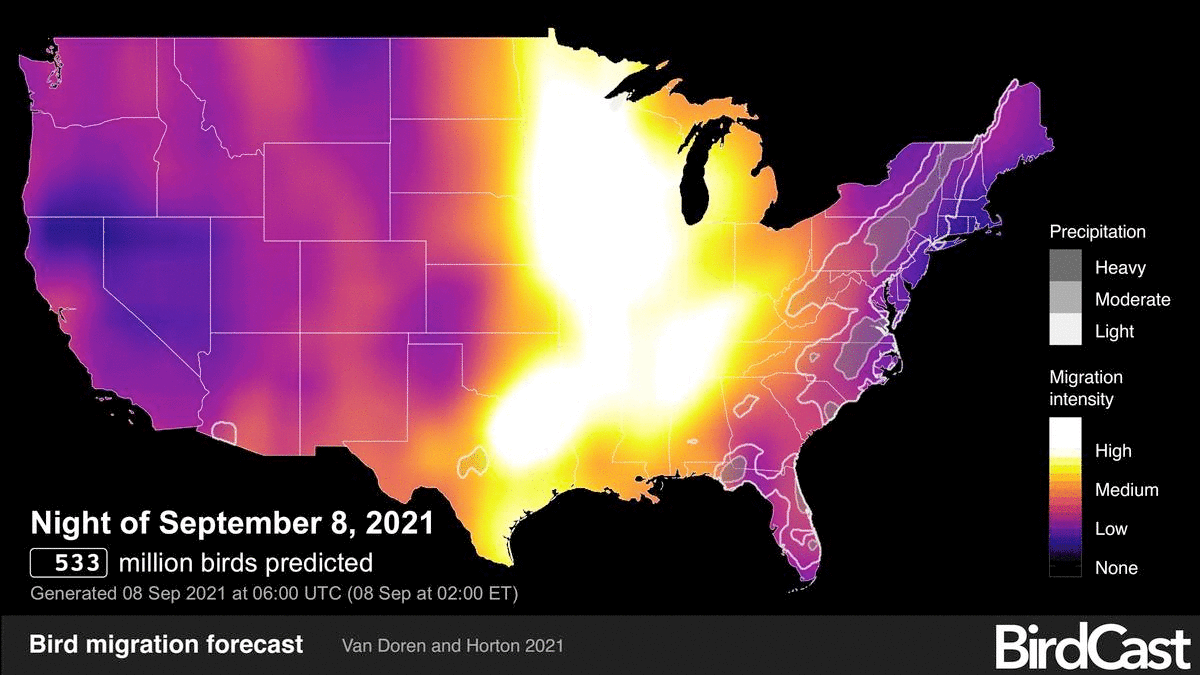
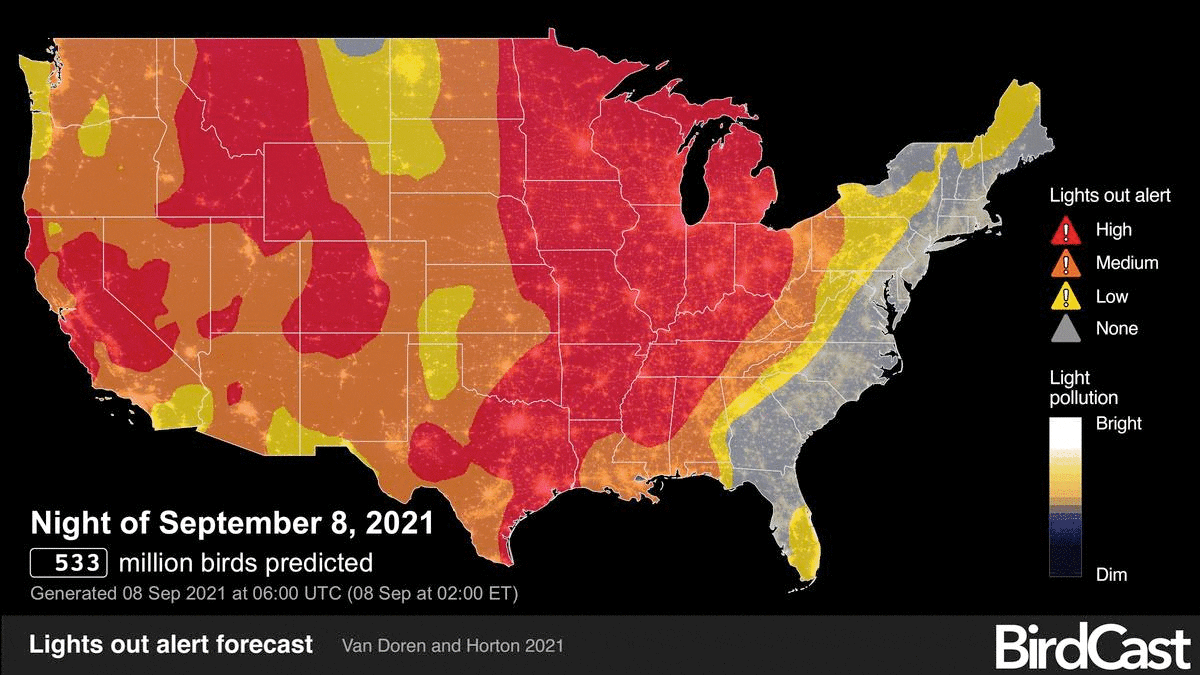 BirdCast Bird Migration forecast and Lights Out Alert forecast from Sept 8, 2021. Images from BirdCast: Forecast and Analysis.
BirdCast Bird Migration forecast and Lights Out Alert forecast from Sept 8, 2021. Images from BirdCast: Forecast and Analysis.
As of this writing in early March, peak migration is a little ways away. So be sure to stay tuned on our social media for more information about spring migration and Lights Out for Birds over the next few months! Find us on Facebook, Instagram, and Twitter.
For other easy ways to help birds, visit our Seven Simple Ways to Help Birds page. For more information and resources about Lights Out for Birds, check out our partner organizations: Audubon Lights Out, Lights Out Colorado, and Lights Out Denver.


